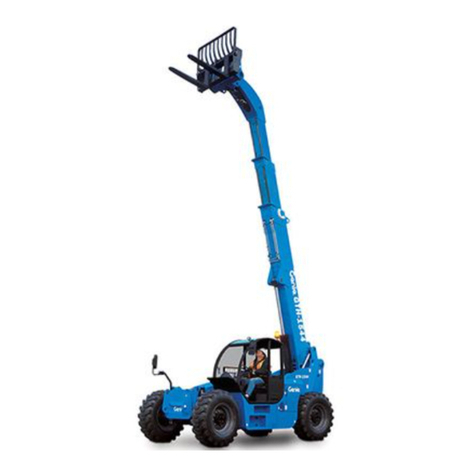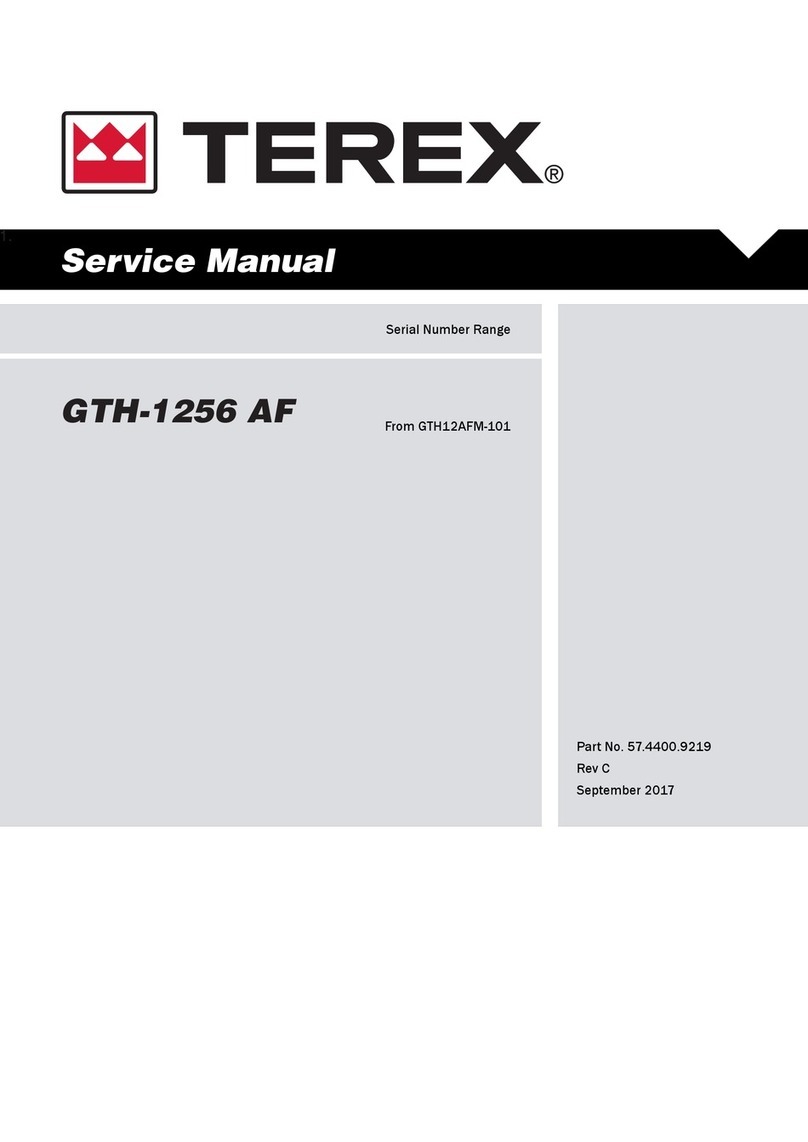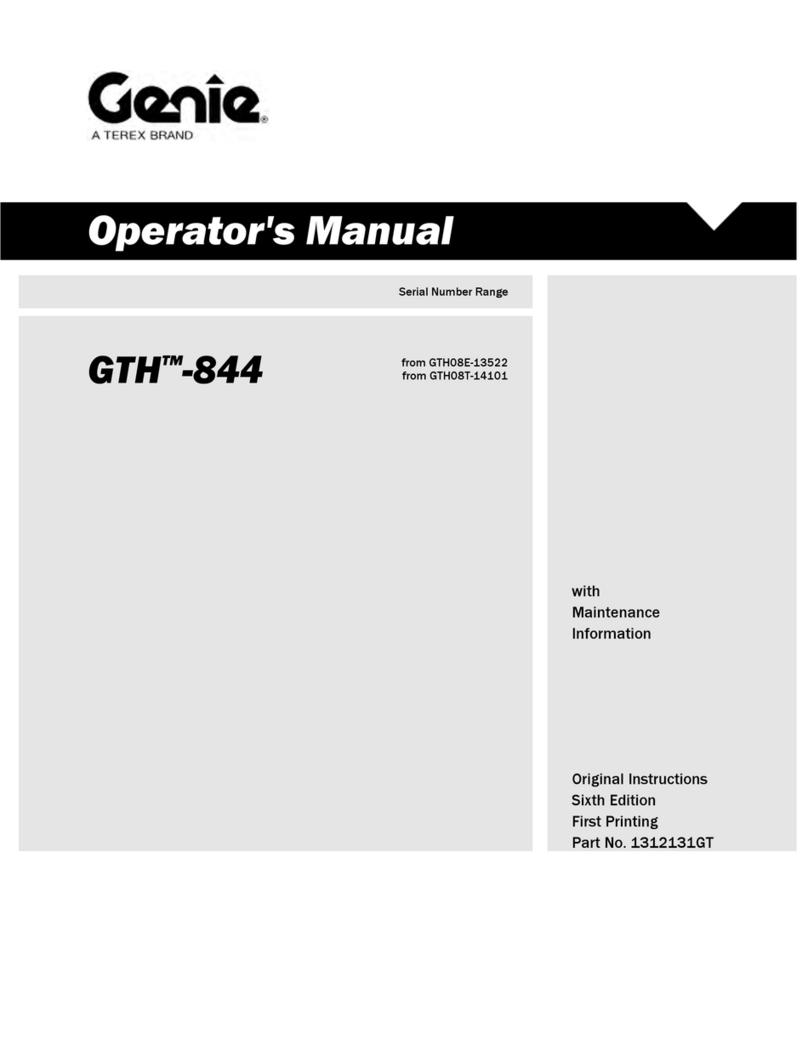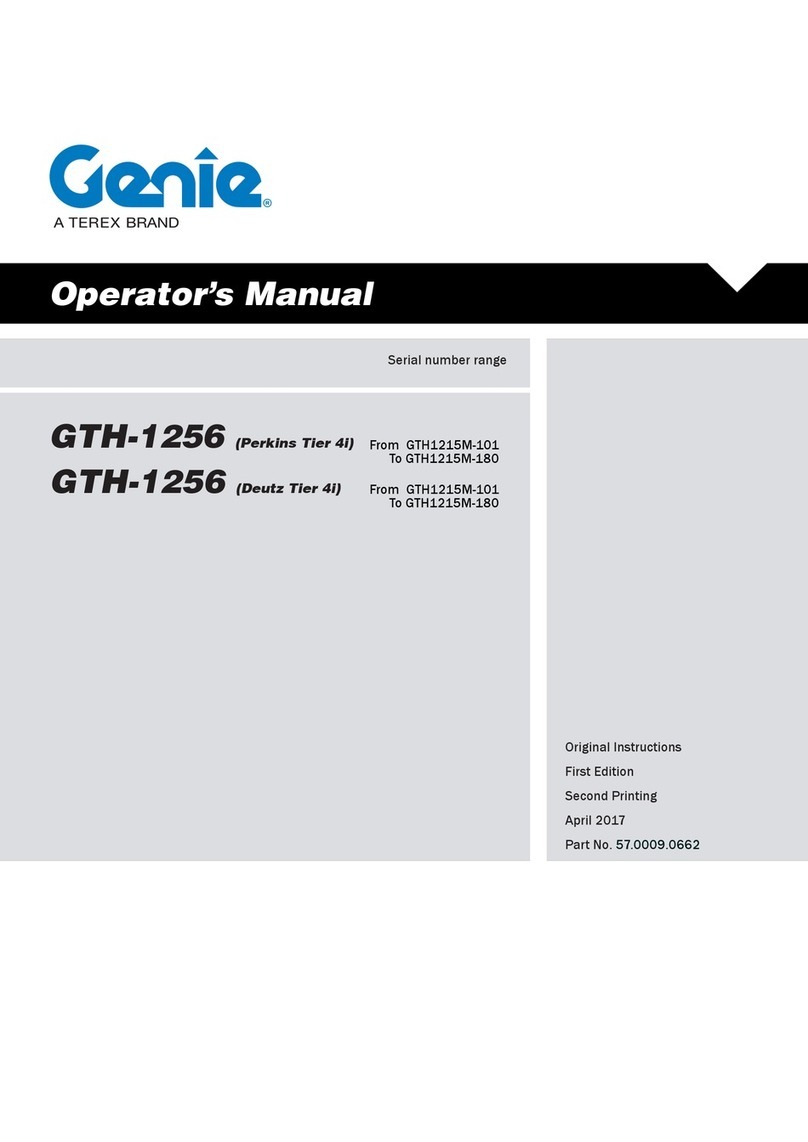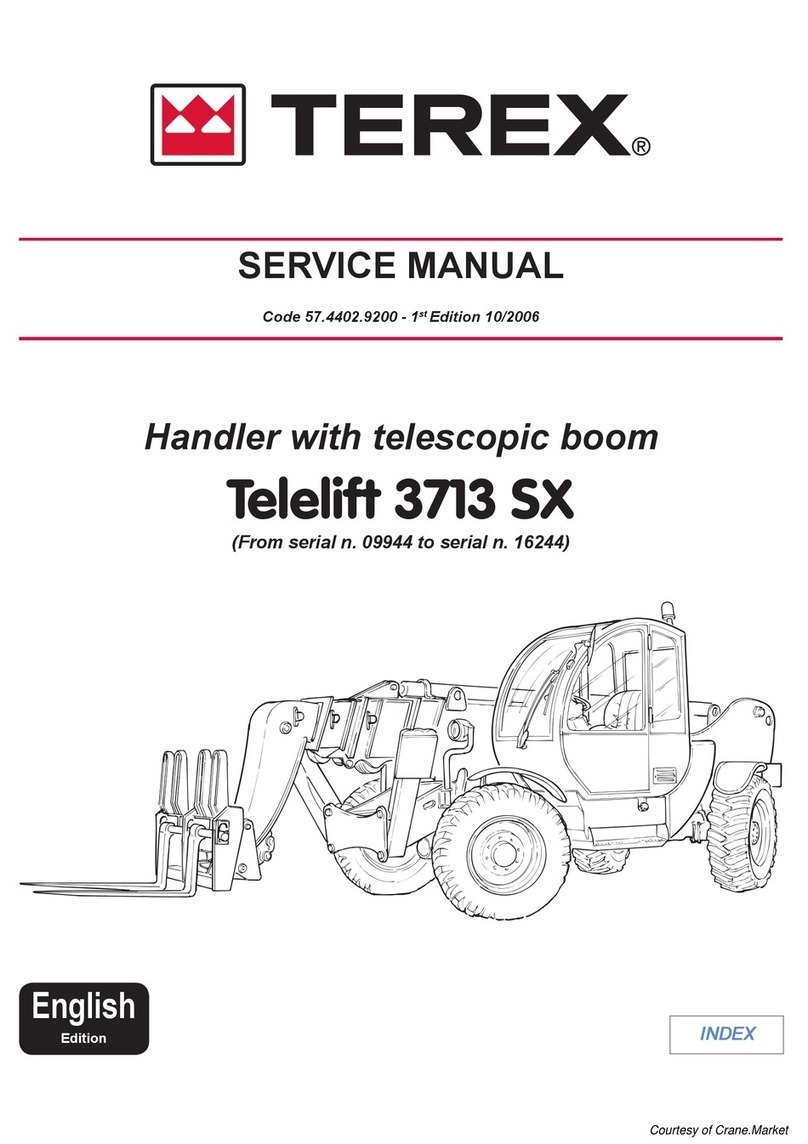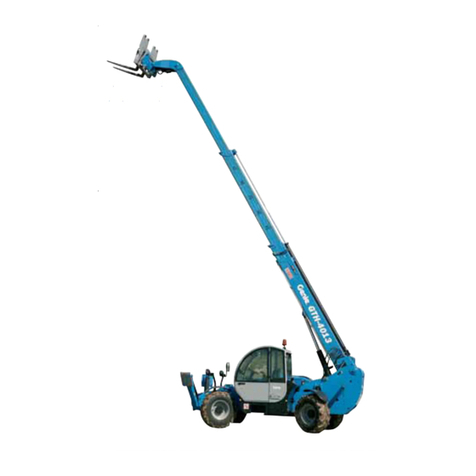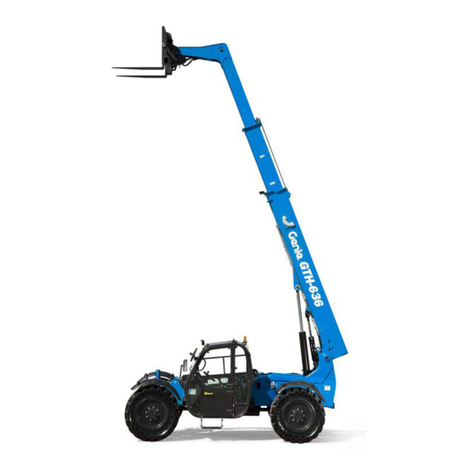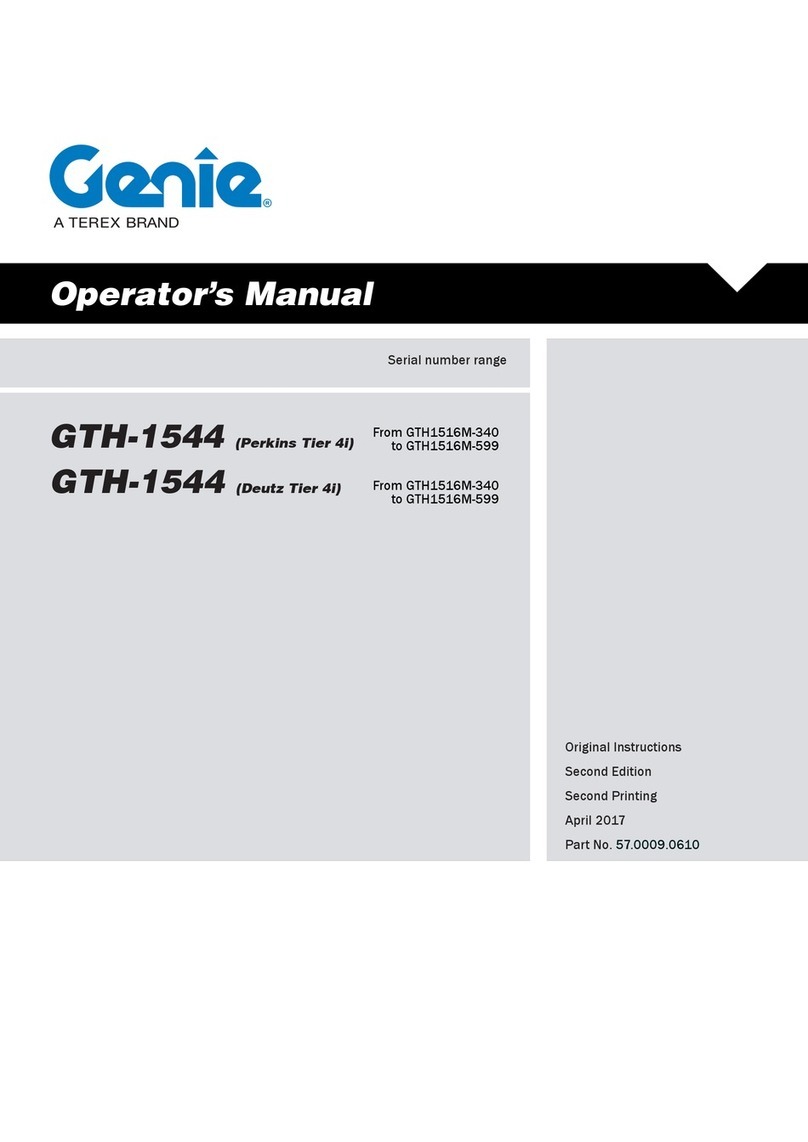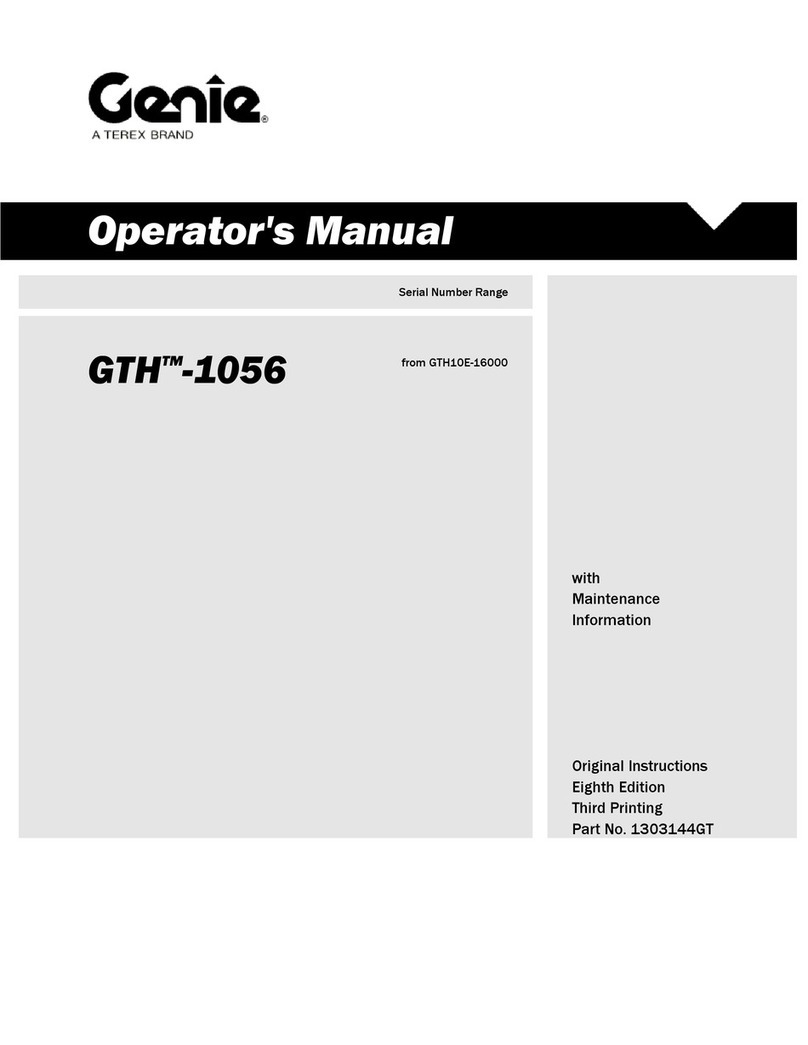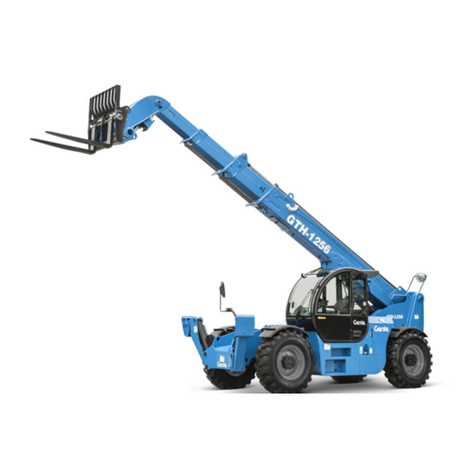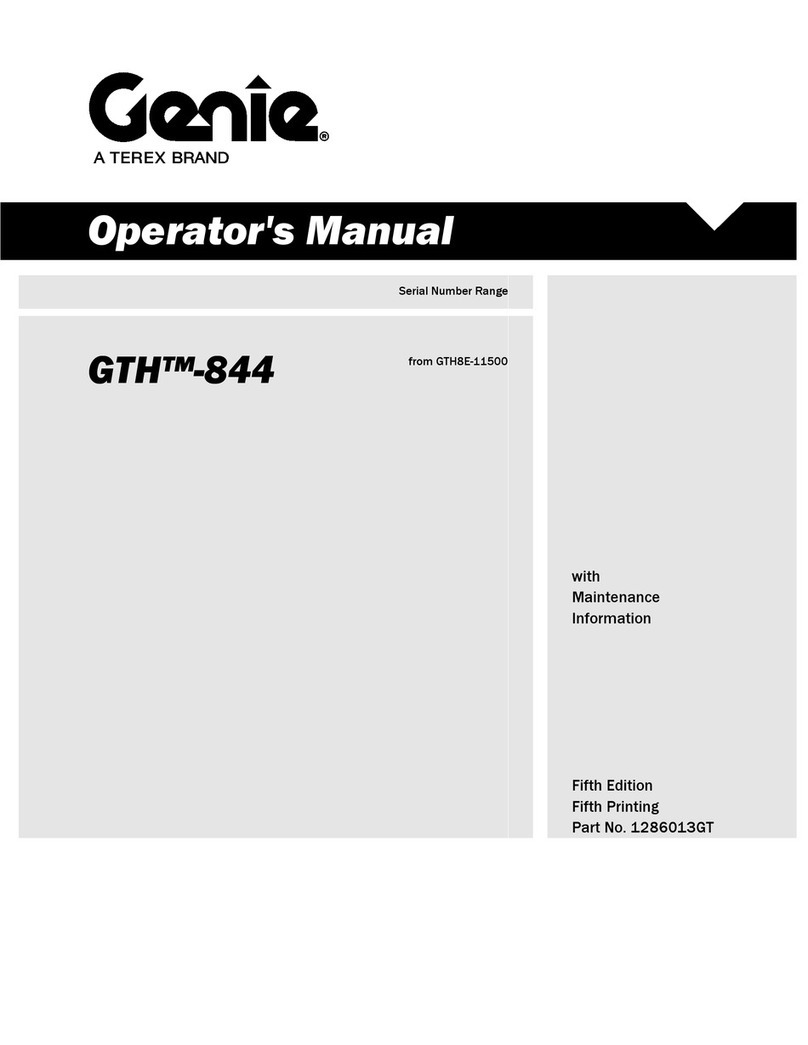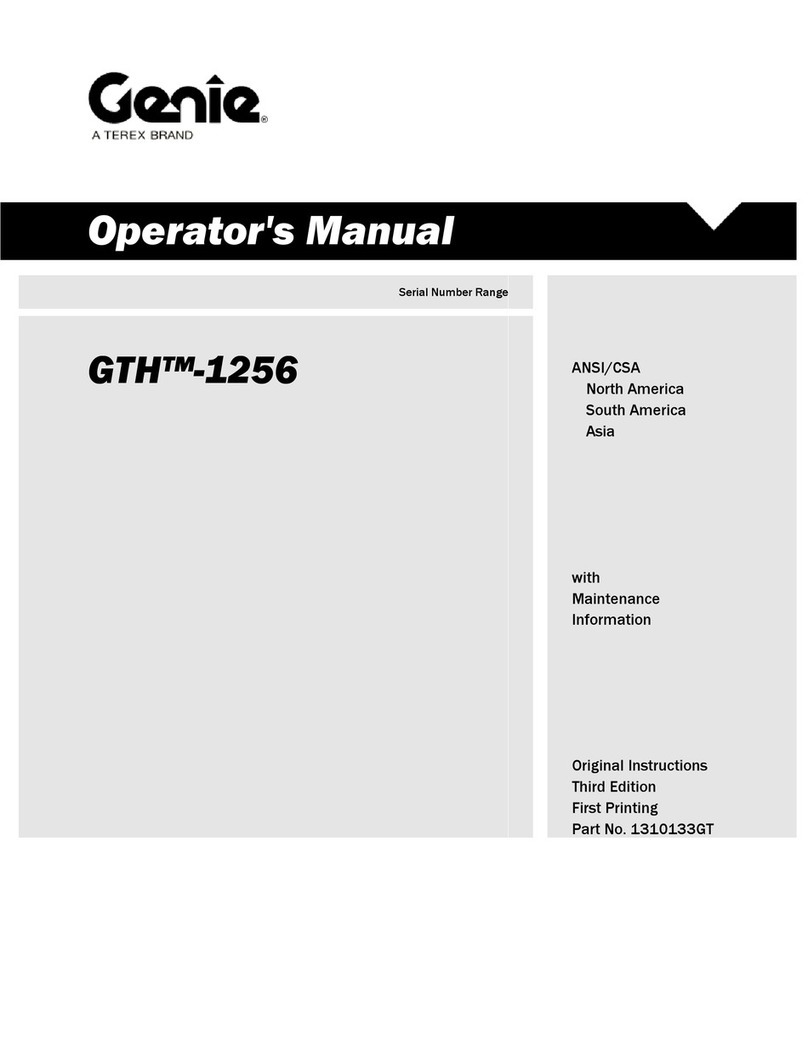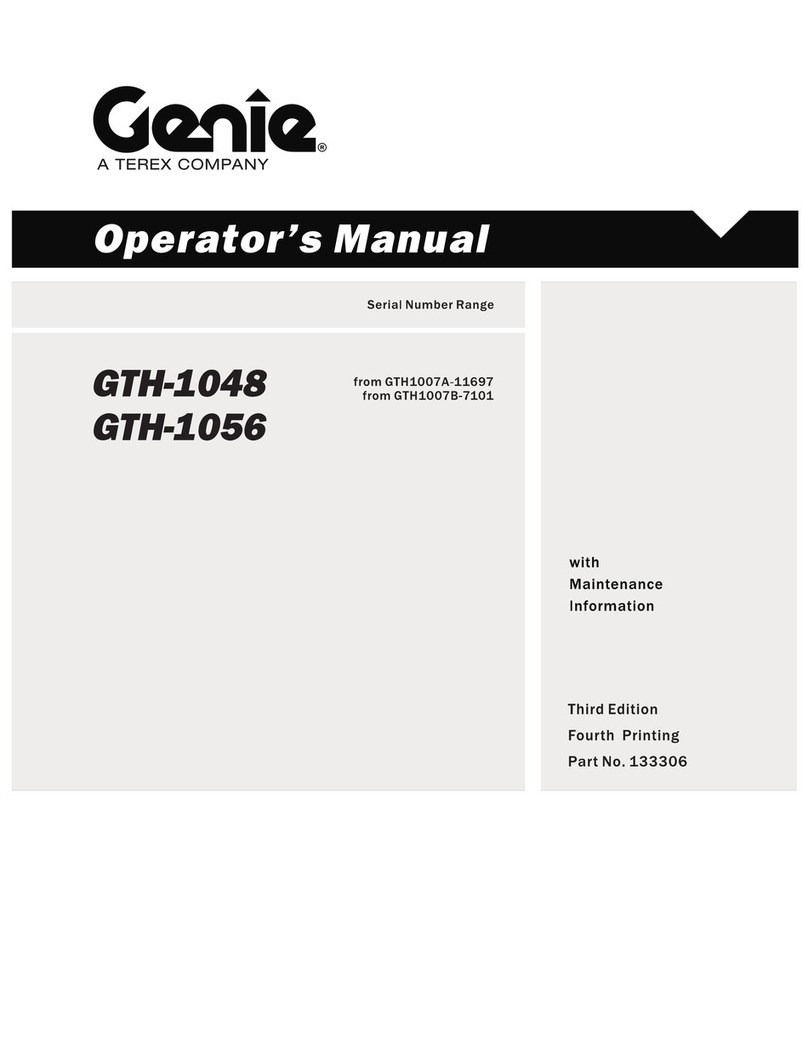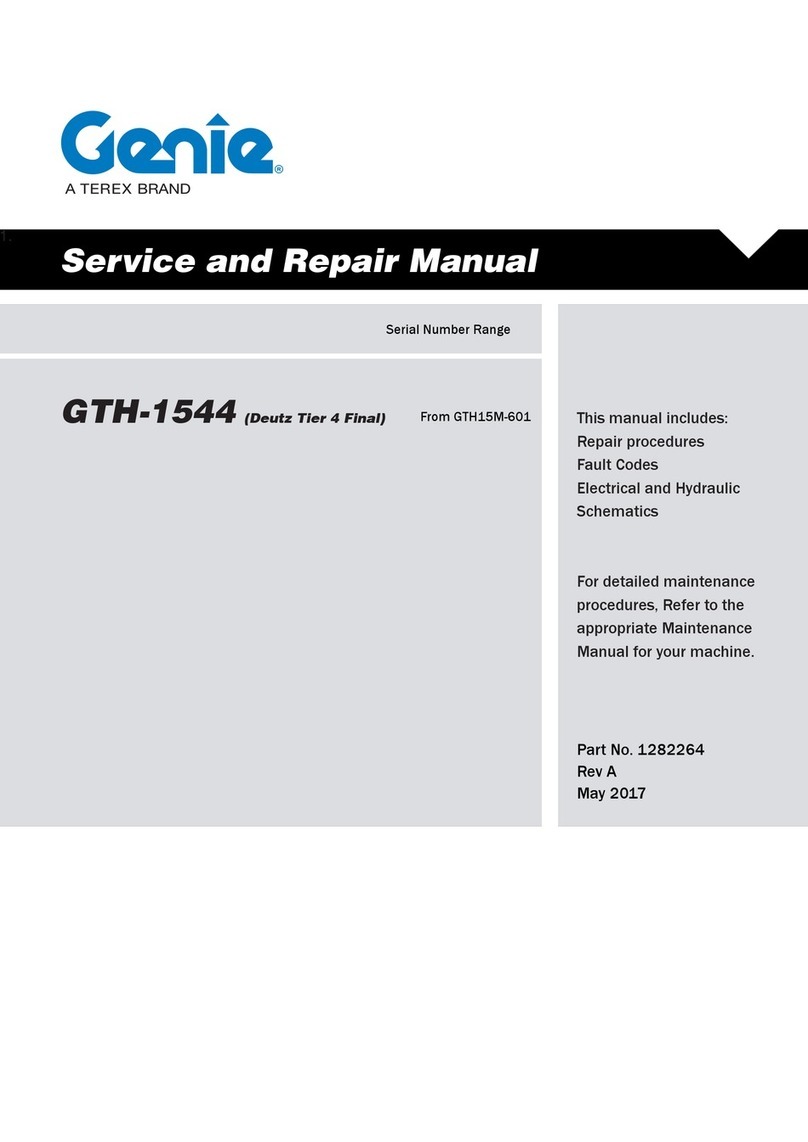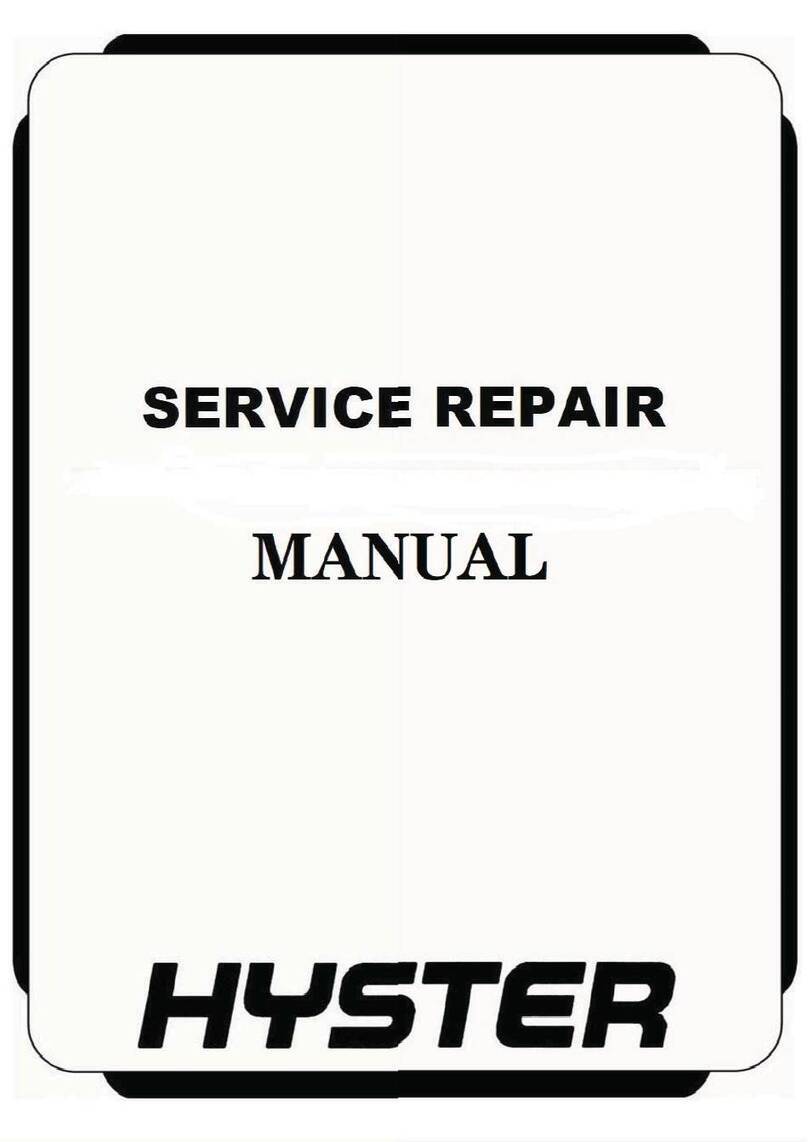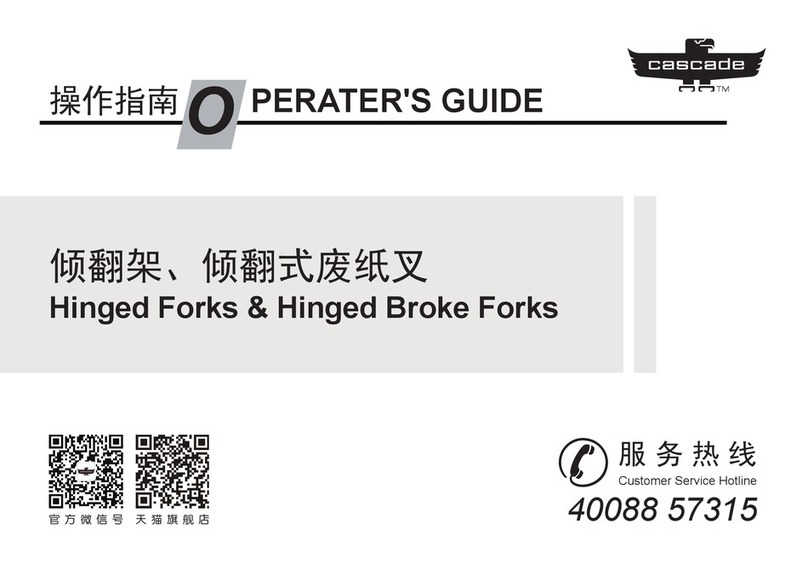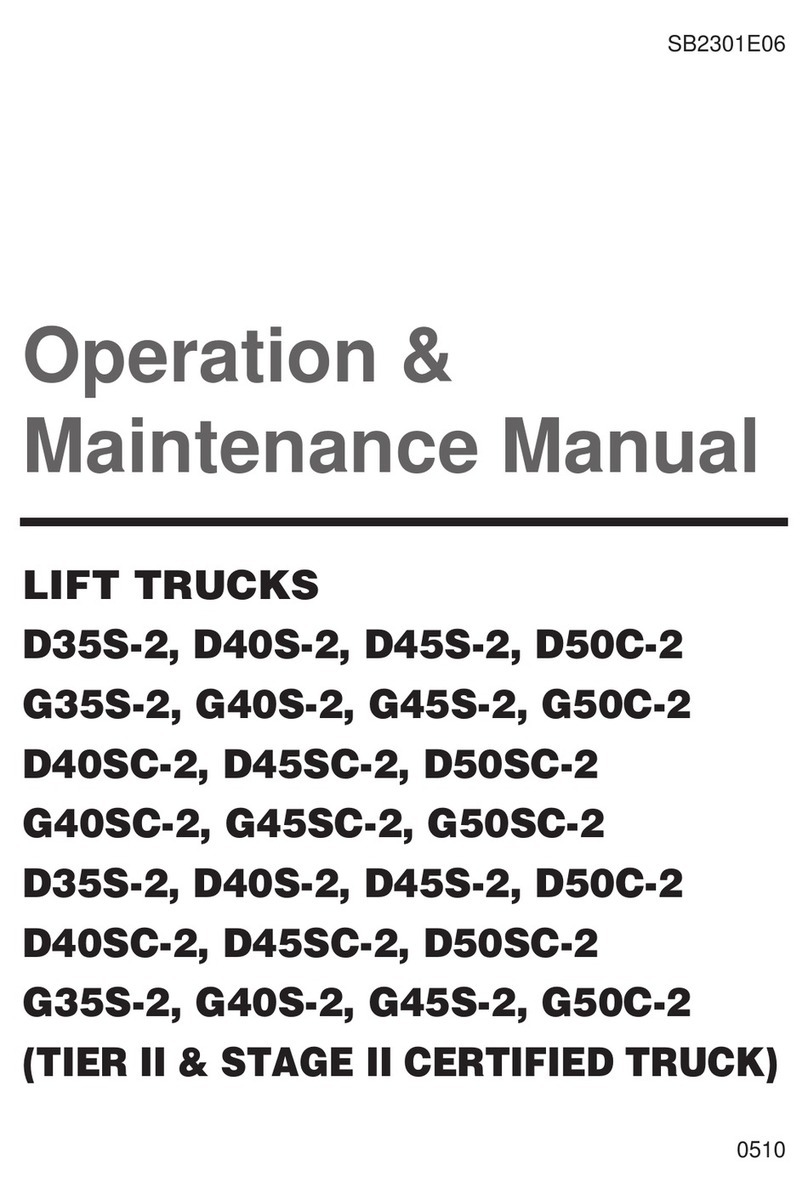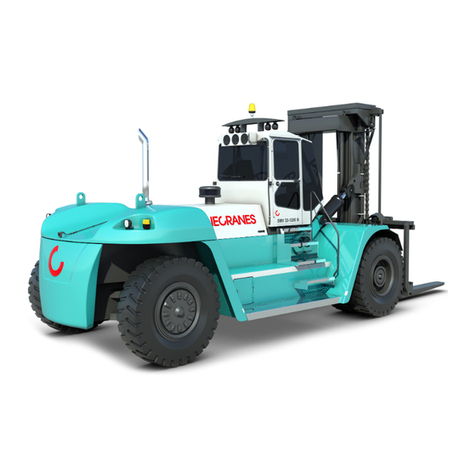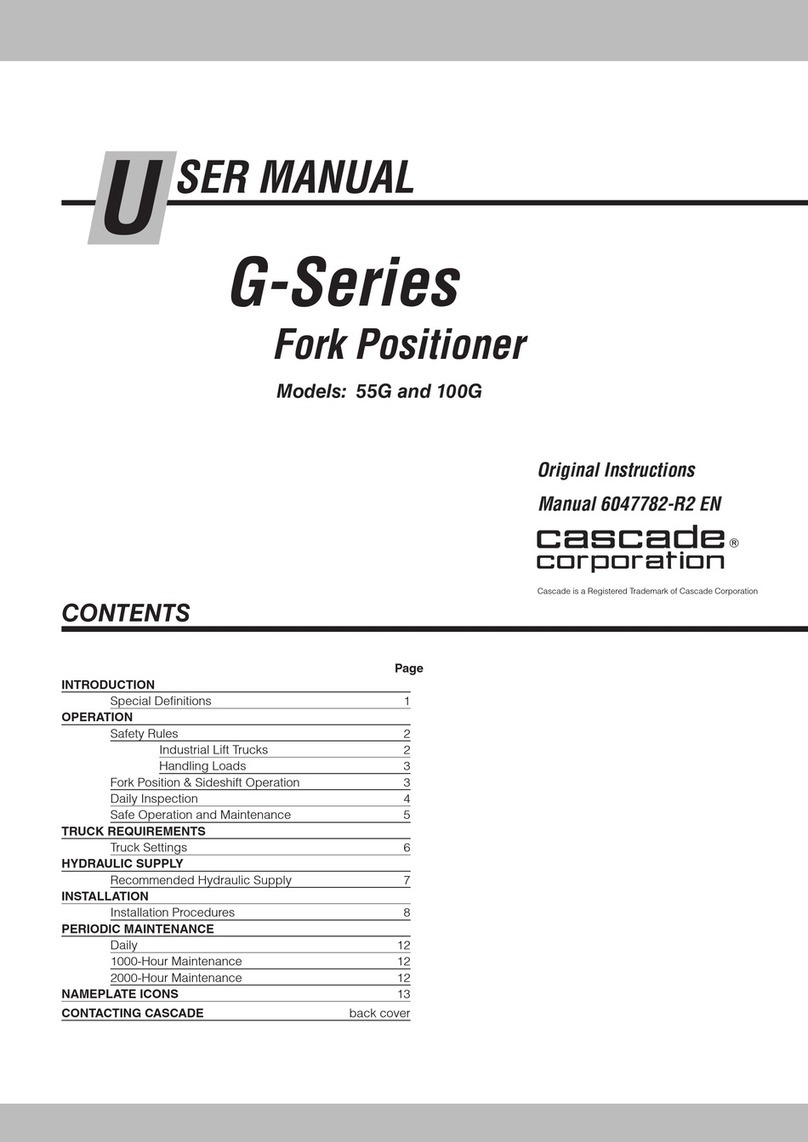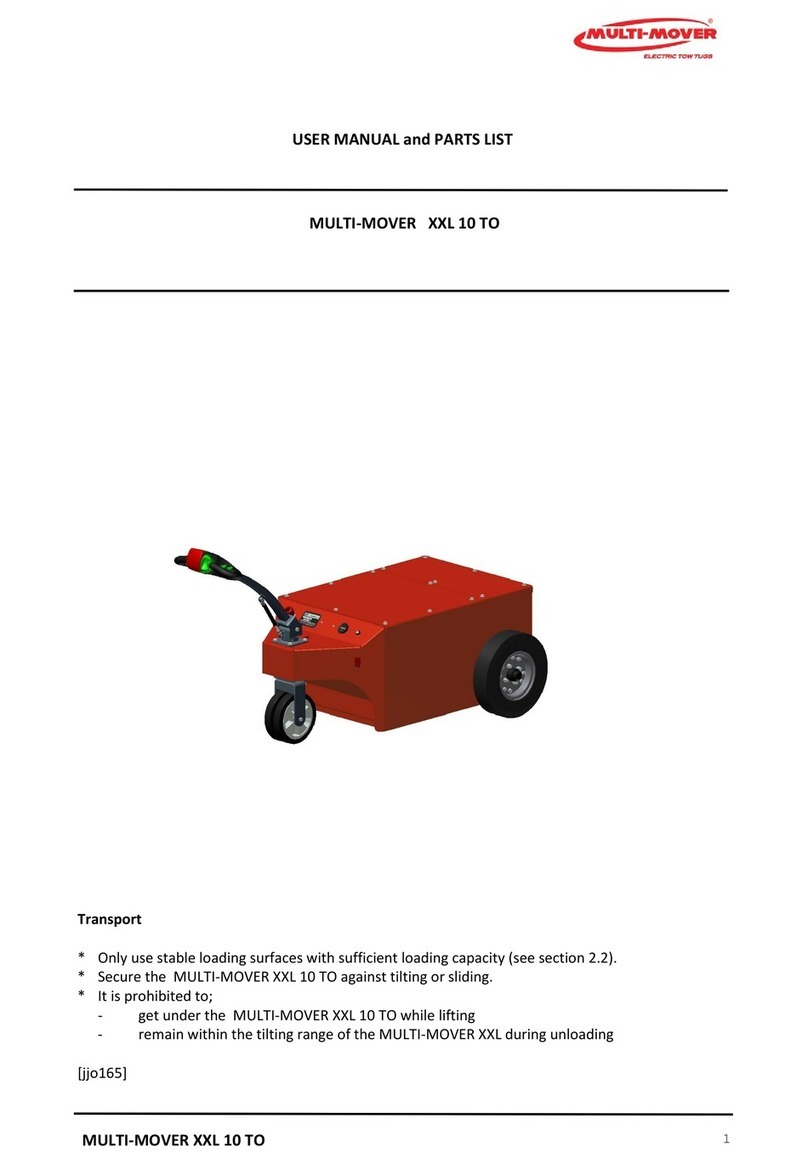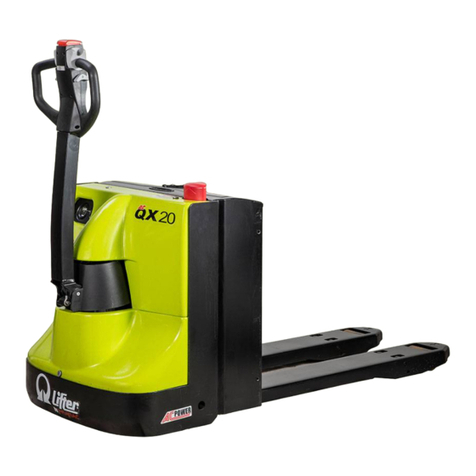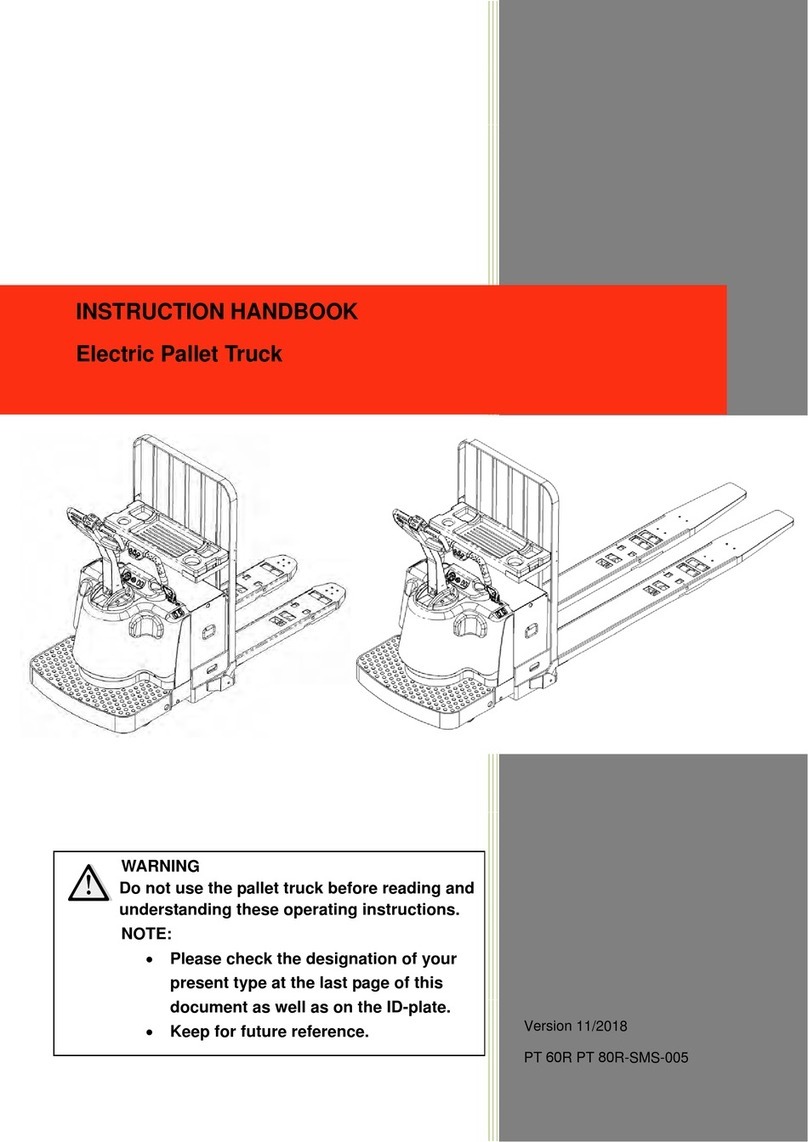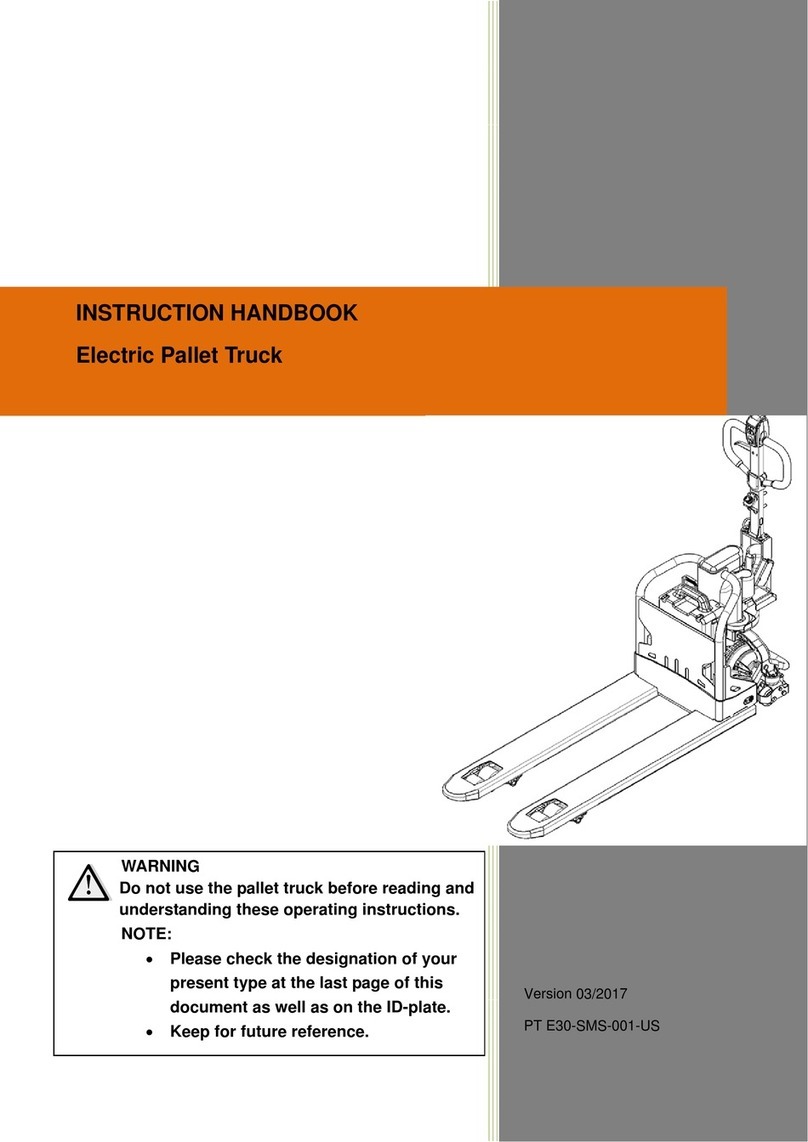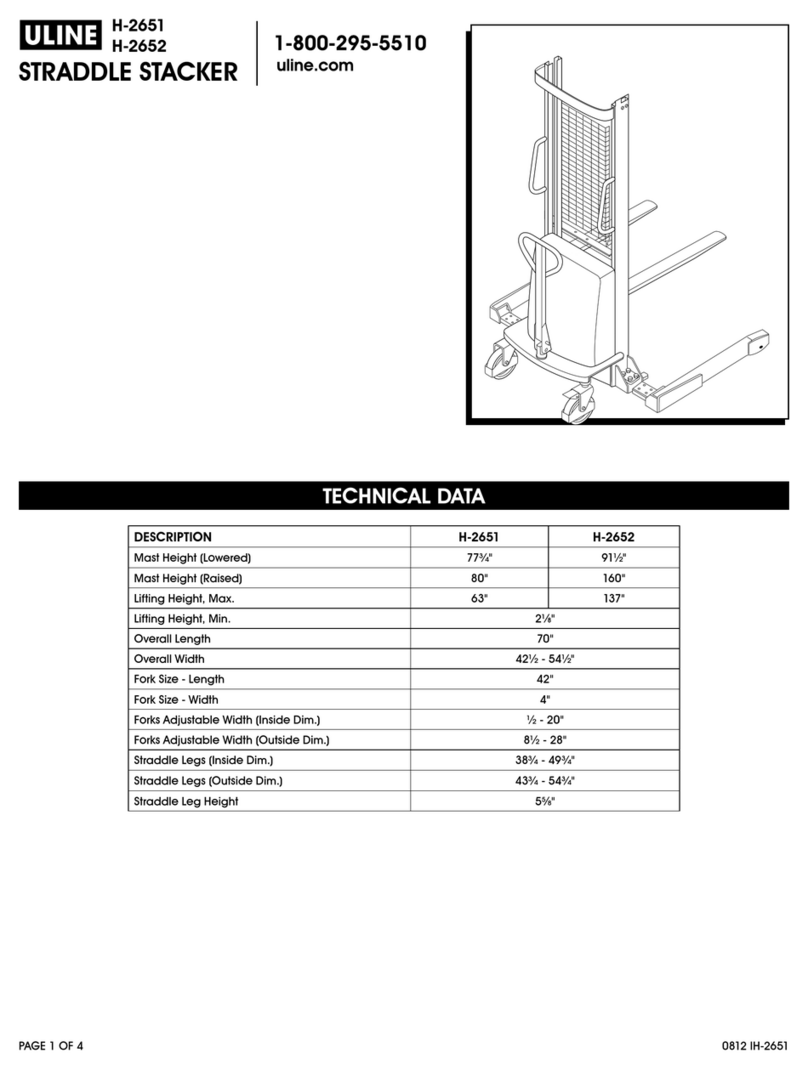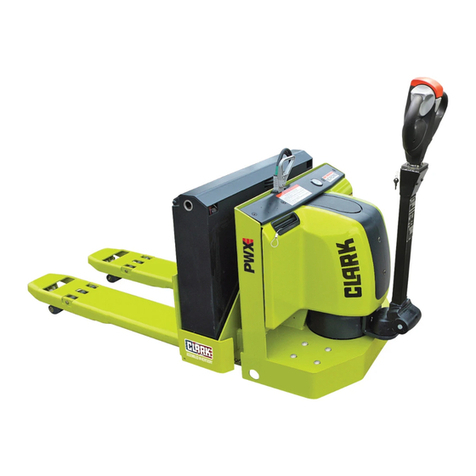
Operator's Manual Third Edition • Fifth Printing
Work Area Safety
8 GTH™-636 Part No. 1286012GT
Work Ar ea Safety Tip-over Hazards
Using the appropriate load chart
for the machine configuration,
confirm that the load is within
the rated capacity of the
machine. Do not exceed the
rated load.
The load center on the fork (if equipped) must be
equal to or less than the load center indicated on
the load chart. If the load center is further from the
fork face than shown on the load chart, refer to the
Load Chart section of this manual.
All loads shown on the load chart are based on the
machine being on firm, level ground, the frame
being level, the forks being positioned evenly on
the carriage, the load being centered on the forks,
the tires being properly sized and properly inflated,
and the telehandler being in good operating
condition.
If using accessories, read, understand and obey
the decals, instructions and manuals with the
accessory.
Do not raise the load unless the ground can
support all forces imposed by the machine.
Do not lower a load without retracting the boom
first.
Do not operate the machine if the load chart is
missing.
Do not exceed the rated capacity for each
configuration.
Do not attempt to jump free of the machine during
a tip-over. The ROPS (Roll Over Protective
Structure) is designed to protect you.
If the telehandler starts to
tip over:
- Do not jump
- Brace yourself and stay
in the seat
- Keep your seat belt
fastened
- Hold on firmly
- Lean away from the
of impact
- Keep head, arms, hands,
legs and all other body
parts inside the operator's
cab at all times.
Do not raise the boom unless
the machine is level. The
machine level indicator should
be at zero degrees.
Do not level the machine using the frame sway
control unless the boom angle indicator is at zero
degrees or less.
Do not use the sway control to
position an elevated load.
